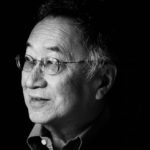Dr. Paul Terasaki
Connection to Donation: Scientist in the transplantation field
Sponsor: Honored by Thermo Fisher Scientific
DR. TERASAKI’S STORY
Dr. Paul I. Terasaki was born in Los Angeles, California in 1929 to parents who emigrated from Japan. During WWII, and at the age of 12, Dr. Terasaki and his family were interned in relocation camps along with thousands of other Americans of Japanese descent.
Given this, it’s notable that after the war, Dr. Terasaki persevered with his education, not just finishing high school in Chicago, but eventually earning three degrees in Zoology at UCLA. In 1957, he traveled to London to work with Nobel Laureate Sir Peter Medawar and it was this mentorship that led him to the field of transplantation. Sir Peter Medawar became known as the father of transplantation.
Dr. Terasaki returned to UCLA in 1959 as a professor, and began his work developing a micro test to identify and study the human genes involved in tissue rejection. The remarkable test he developed used just one microliter, the equivalent of a single drop, of human cells and one microliter of human serum to test tissue compatibility. The platform for this test was a small plastic tray with 60 tiny wells, each one containing human cells and human serum. Known as the Terasaki Tissue Typing tray, it was one of the first of Dr. Terasaki’s inventions that revolutionized the field of transplantation. By 1970, his test had become the international standard for determining human compatibility between transplant patients and potential donors.
In 1969, Dr. Terasaki was the first transplant scientist to conclude that monitoring for antibodies before a transplant was critical to the survival of the organ. As a result, he developed the crossmatch test which also became an international standard test for all centers performing a transplant. In 2003, he would again revolutionize the field of transplantation by introducing new technologies for transplant centers to monitor their patients post transplantation.
In 1984, Dr. Terasaki founded One Lambda, a transplant diagnostic company based in Los Angeles that today supplies life-saving technologies used every day by transplant centers around the world. In 2012, One Lambda was acquired by Thermo Fisher Scientific.
Dr. Terasaki never stopped pushing the boundaries of transplant diagnostic science. And today at the transplant diagnostics business (formerly One Lambda) at Thermo Fisher Scientific, his novel diagnostics are forming the foundation for a new era of personalized medicine in organ transplantation destined to revolutionize patient care.
His scientific innovations in the field of transplantation continue to play a pivotal role in improving the quality of life for transplant patients worldwide.
